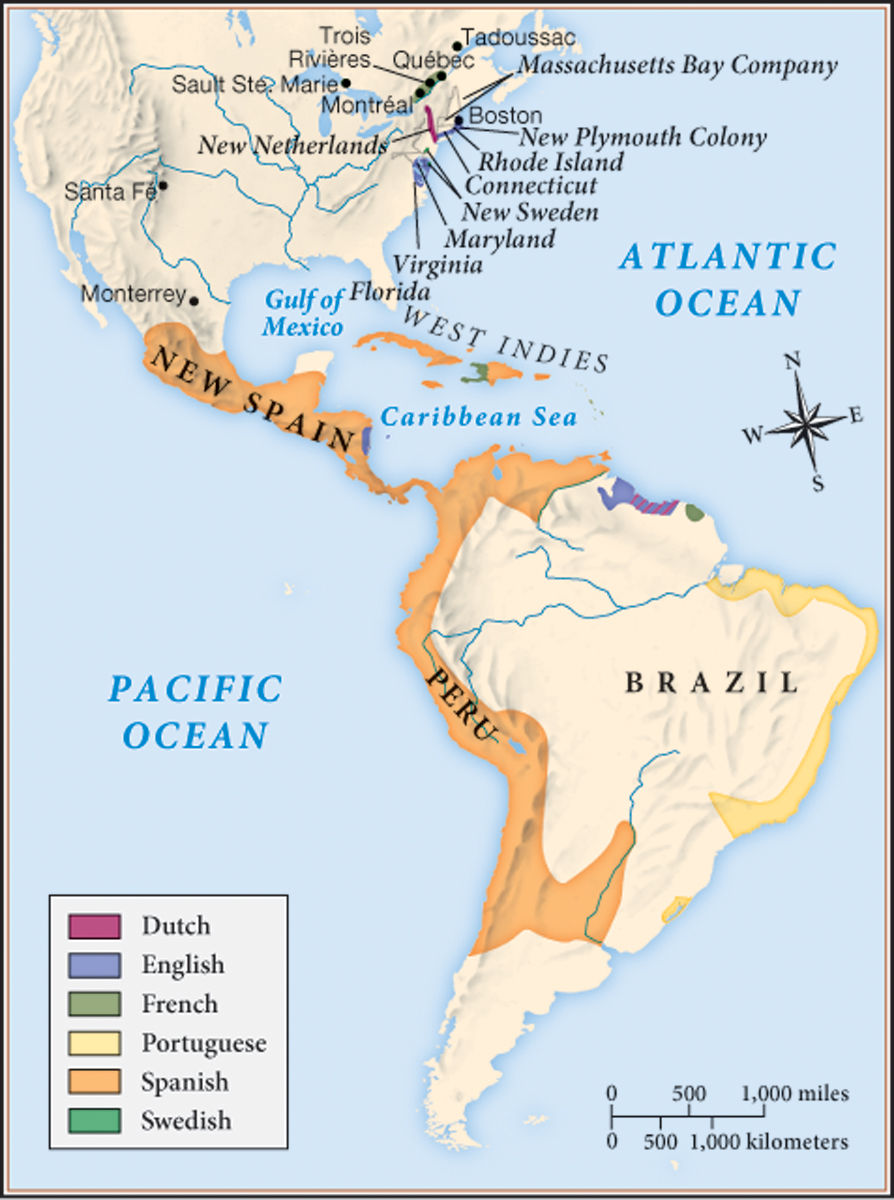The Economic Balance of Power
Printed Page 490
Important EventsThe Economic Balance of Power
Just as the recession of the early seventeenth century produced winners and losers among ordinary people, it also created winners and losers among the competing states of Europe. The economies of southern Europe declined during this period, whereas those of the northwest emerged stronger. Competition in the New World reflected and reinforced this shift as the English, Dutch, and French rushed to establish trading outposts and permanent settlements to compete with the Spanish and Portuguese.

The new powers of northwestern Europe, with their growing Atlantic trade, gradually displaced the Mediterranean economies, which had dominated European commerce since the time of the Greeks and Romans. England and the Dutch Republic vied with France to become the leading mercantile and slave-trading powers. Northern Italian industries were eclipsed; Spanish commerce with the New World dropped. Even the plague contributed to the new disparity in trading power. Whereas central Europe and the Mediterranean countries took generations to recover from its ravages, northwestern Europe quickly replaced its lost population, no doubt because this area’s people had suffered less from the effects of the Thirty Years’ War and from the malnutrition related to the economic crisis.
All but the remnants of serfdom had disappeared in western Europe, yet in eastern Europe nobles reinforced their dominance over peasants, and the burden of serfdom increased. The rise in the cost of grain in the sixteenth century prompted Polish and eastern German nobles to increase their holdings and step up their production of grain for western markets. In the economic downturn of the first half of the seventeenth century, peasants who were already dependent became serfs—completely tied to the land. Although enserfment produced short-term profits for landlords, in the long run it retarded economic development in eastern Europe and kept most of the population in a stranglehold of illiteracy and hardship.
Economic realignment also took place across the Atlantic Ocean. Because Spain and Portugal had divided between themselves the rich spoils of South America, other prospective colonizers had to carve niches in seemingly less hospitable places, especially North America and the Caribbean (Map 15.3). Eventually, the English, French, and Dutch would dominate commerce with these colonies. Many European states, including Sweden and Denmark, chartered private joint-stock companies to enrich investors by importing fish, furs, tobacco, and precious metals (if they could be found), and to develop new markets for European products. British, French, Dutch, and Danish companies also began trading slaves.
In establishing permanent colonies, the Europeans created whole new communities across the Atlantic. Careful plans could not always surmount the hazards of transatlantic shipping, however. In 1620 the Mayflower, which had sailed for Virginia with Pilgrim emigrants, landed off-course far to the north in Massachusetts, where the settlers founded New Plymouth Colony. By the 1640s, the British North American colonies had more than fifty thousand people, of whom perhaps a thousand were Africans. The Indians native to the area had been decimated in epidemics and wars.
In contrast, French Canada had only about three thousand European inhabitants by 1640. Though thin in numbers, the French rapidly moved into the Great Lakes region. Fur traders sought beaver pelts to make the hats that had taken Paris fashion by storm. Jesuit missionaries lived with native American groups, learning their languages and describing their ways of life.
Both England and France turned some attention as well to the Caribbean in the 1620s and 1630s when they occupied the islands of the West Indies after driving off the native Caribs. These islands would prove ideal for a plantation economy of African slaves tending sugarcane and tobacco crops under the supervision of European settlers.
REVIEW QUESTION What were the consequences of economic recession in the early 1600s?
Even as the British and French moved into North America and the Caribbean, Spanish explorers traveled the Pacific coast up to what is now northern California and pushed into New Mexico. On the other side of the world, in the Philippines, the Spanish competed with local Muslim rulers and indigenous tribal leaders to extend their control. Spanish officials worked closely with Catholic missionaries to rule over a colony composed of indigenous peoples, Spaniards, and some Chinese merchants.